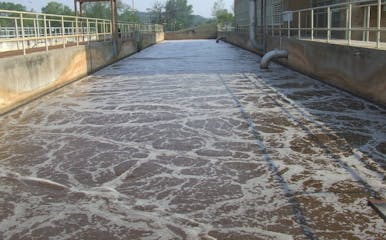Given the rising costs of energy in our province, it is important that aeration tanks that process waste water run as efficiently as possible. Whether at the municipal or industrial level, it is estimated that electricity typically accounts for about 30% of the cost in wastewater treatment. This article will examine what is needed to ensure that that you are getting the most out of your aeration tank.
Aeration System Components
Essentially aeration systems can be divided into three main parts including: airflow generation, airflow distribution and aeration control. To obtain maximum aeration tank efficiency, each of these parts must be operating at optimal levels.
Types of Blowers
As technology has improved, more efficient types of blowers have been developed. For example, systems that use straight oxygen (O2) require significantly less energy than those that use air. Furthermore, it is essential that the right size and horsepower blowers for the tank be used.
Using multiple blowers is also beneficial because it reduces the chance that a system-wide pumping failure might occur. As old air blowers fail, companies and municipalities may choose to replace them with O2 blowers. While they can be replaced all at once, doing so requires a large amount of capital so it often makes more sense financially to replace them over time to gain greater efficiency.
Process Piping
The piping system is another critical component for helping determine the efficiency of the aeration tank. If the pipes are too small, blowers with more horsepower may be required. If the pipes are too large, the system may become too difficult to control.
Equipment Components
Additionally, each of the components of the aeration tanks must meet certain standards to ensure efficiency. These components include air control valves, airflow meters and DO meters.
- Air Control Valves – Valve size should be large enough that they can operate when they are 30-70% open. They should be installed downstream of airflow meters in order to reduce the amount of possible disturbances in the airflow.
- Airflow Meters – There are several different types of airflow meters on the market and all work well as long as they have been properly installed. These must be placed a minimum distance either upstream or downstream of a disturbance. The manufacturer’s guidelines on this distance should be adhered to for optimal efficiency.
- DO Meters – DO Meters have become standard in municipal wastewater plants. These optical-based meters are popular because of their reliable readings and also because they require only a minimal amount of maintenance. These meters should be placed between halfway and two-thirds down the aeration control basin.
Maintenance and Cleaning
Finally, even if you have all the best components, you won’t optimize your efficiency without proper maintenance and regular cleaning. As tanks fill up with sludge, they become less efficient but regular cleaning can help restore them.
The efficiency of an aeration tank comes down to both the components that are used as well as its ongoing maintenance. If you would like to improve the efficiency of your municipal or industrial tank, contact Wessuc today. A member of our team would be happy to meet you for a consultation and discuss possible ways to improve your efficiency.
